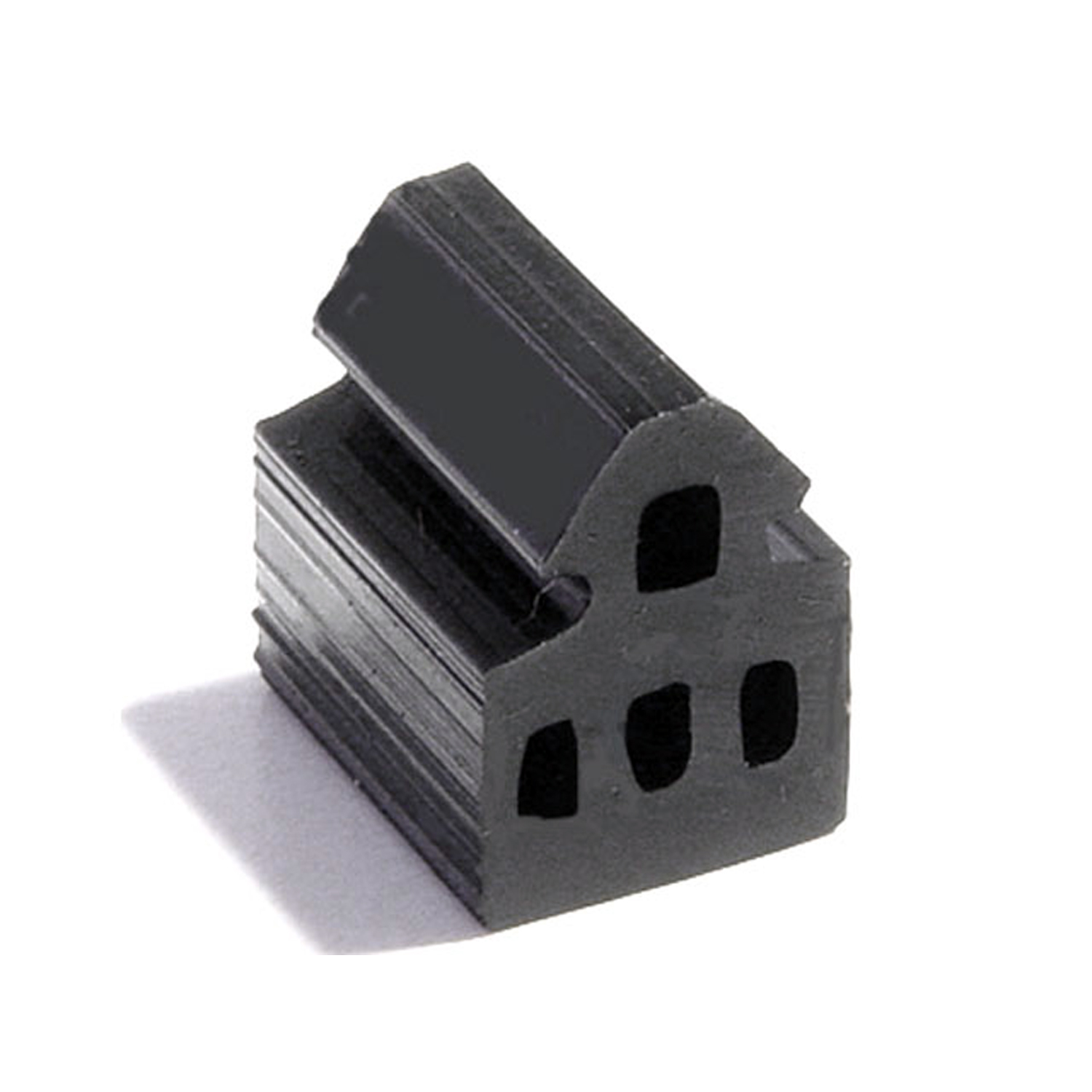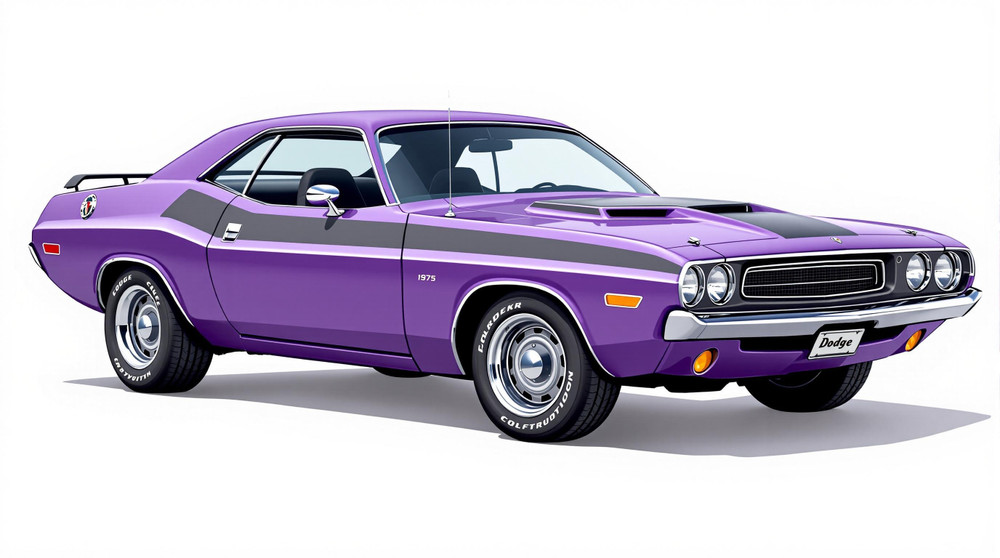Image of 1979 Dodge Challenger, Note: These illustrations use artistic license and may differ from actual historical models.
Performance Metrics
Fundamental Metrics
Emotional Appeal
MMP Rating
| Engine Specifications | |
|---|---|
| Engine: | 2.6L 4-cylinder engine |
| Displacement: | 2.6L |
| Horsepower: | 105 hp |
| Torque: | 139 lb-ft |
| Compression Ratio: | 8.5:1 |
| Ignition System: | Electronic ignition system |
| Cooling System: | Liquid-cooled |
| Performance Specifications | |
| 0-60 Time: | 11 seconds |
| 1/4 Mile Time: | 18 seconds |
| Top Speed: | 105 mph |
| Transmission and Drive | |
| Drive Type: | Rear-wheel drive |
| Transmission Type: | 4-speed manual or 3-speed automatic |
| Fuel and Efficiency | |
| Fuel System Type: | Carburetor |
| MPG: | 20 city / 28 highway |
| Dimensions and Brakes | |
| Brakes: | Front disc and rear drum brakes |
| Wheelbase: | 99.6 inches |
| Weight: | 2,500 lbs |
Note: Specifications for classic cars are given to the best of our ability, considering the limited and variant data available.
1979 Dodge Challenger: A Forgotten Gem in Automotive History
Amidst the backdrop of the late 70s automotive landscape, the 1979 Dodge Challenger emerged as a beacon of nostalgia, harking back to the muscle car era that was rapidly fading into the rearview mirror. Born from a partnership between Dodge and Mitsubishi, this Challenger was a far cry from its 1970s predecessor, yet it offered a unique blend of American branding and Japanese engineering. It stood out as a compact car with a sporty flair during a time when fuel efficiency began to take precedence over raw horsepower.
Design and Innovation
The exterior of the 1979 Dodge Challenger showcased a sleek profile with an elongated hood and a short rear deck, reminiscent of its muscle car lineage but with a noticeably downsized footprint. The sharp lines and angular design reflected the aesthetic trends of the late 70s, while the flip-up headlights added a touch of sophistication to its road presence.
Inside, the Challenger's cabin featured an array of materials ranging from basic vinyl to plush velour, catering to various tastes and preferences. The dashboard layout was straightforward and functional, with an emphasis on driver ergonomics. Technological features for its time included an AM/FM radio, optional air conditioning, and for some models, even cruise control.
Color options for this model year included vibrant hues such as Bright Red, Sunshine Yellow, and Mediterranean Blue Metallic. Among these, the classic red often became synonymous with the sportier image Dodge aimed to project. The Challenger was available in both coupe and hardtop body styles, with the hardtop being particularly sought after by enthusiasts.
Historical Significance
The 1979 Dodge Challenger represented an intersection between American muscle heritage and the shifting priorities towards economy and efficiency. It was one of the early examples of global automotive partnerships that would become more common in later decades. This model set itself apart by offering a balance between performance aspirations and practical considerations during an era of significant change in the auto industry.
Performance and Handling
The '79 Challenger came equipped with either a 1.6L inline-four or a more powerful 2.6L four-cylinder engine. While these powertrains couldn't compete with the V8 monsters of its namesake's past, they were adequate for daily driving needs. The top speed was modest by today's standards, and acceleration from 0-60 mph was not going to set any records but was respectable for its class at the time.
Handling-wise, drivers could expect a smooth ride with competent handling around corners. The steering was responsive enough to provide a sense of connection with the road without being overly taxing during longer journeys.
Ownership Experience
The 1979 Dodge Challenger found its niche among those seeking an economical yet stylish daily driver. It also garnered attention from car enthusiasts looking for an accessible entry point into classic car ownership. Maintenance was relatively straightforward due to its mechanical simplicity and shared components with other Mitsubishi models of that period.
Fun Facts
A curious piece of trivia is that despite sharing its name with one of Dodge's most iconic muscle cars, this Challenger had more in common mechanically with Mitsubishi's offerings than anything else in Dodge's lineup. While not known for breaking speed records or dominating sales charts, it did make occasional appearances in television shows and movies as a symbol of its time.
Collector's Information
In today's collector market, the 1979 Dodge Challenger is something of an anomaly. Its production numbers weren't as low as some limited-edition models but finding one in pristine condition can be challenging. Estimates suggest that values can range widely depending on condition, mileage, and originality – from just a few thousand dollars up to perhaps $15,000 or more for showroom-quality examples.
Conclusion
The 1979 Dodge Challenger may not have been the powerhouse that its predecessor was known for; however, it stands as an interesting chapter in automotive history that reflects the changing tides of consumer preferences and industry standards at the time. Its blend of American style with Japanese engineering makes it a unique piece worthy of recognition among classic car aficionados.
1979 Dodge Challenger Catalog of Parts
 1979 Dodge Challenger Door Bumper. 5/8" wide, made from extrusion. Each-DB 52Door Bumper. 5/8" wide, made from extrusion. Each
1979 Dodge Challenger Door Bumper. 5/8" wide, made from extrusion. Each-DB 52Door Bumper. 5/8" wide, made from extrusion. EachWhy Choose Metro?
For over 100 years, Metro Moulded Parts has been the pinnacle of quality in classic car restoration parts. Our commitment to precision and authenticity in every component ensures a perfect fit and an OEM-level appearance.
- Expert Craftsmanship & Quality: Each part is a testament to our dedication to reliability and perfection, crafted from original designs and thoroughly tested.
- Advanced Technology: We use cutting-edge techniques to create flawless, long-lasting parts that surpass others in performance.
- SuperSoft Sponge – The Ultimate Door Seal: Not only are our door seals 30% softer than competitors', but they're also guaranteed to never leak. They effectively reduce wind and road noise, enhancing your classic car's comfort and driving experience.
- Proudly American: Our parts are a product of American craftsmanship, made in the USA with a spirit of excellence and heritage.
- Unrivaled Warranty: We back our products with a 30-year industry-leading warranty, a testament to our confidence in their quality.
Join us in preserving the legacy of classic cars with parts that are crafted for perfection, not just made.

